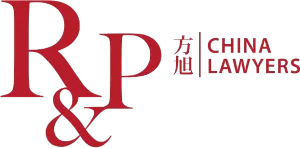If your trademark application is refused due to the existing (cited) marks, you may decide to file a review procedure. Meanwhile you may want to try eliminating the cited marks through secondary actions such as cancellations or invalidations. In practice, these secondary actions often take longer than the refusal review, which means that the review application will be turned down. This often results in a lot of frustration for rights holders, which could be prevented if the China Trademark Office (CTMO) examiner would agree to suspend their review of the initial application, pending completion of the secondary actions.
CTMO's New Internal Regulations
Regulations for the Suspension of Review Cases ("Regulations") added by CTMO in their internal work system in June, do just that: in trademark refusal reviews, non-registration reviews and invalidation declaration cases, the CTMO shall suspend its review under circumstances such as:
- The cited trademark is in the process of being cancelled or withdrawn.
- The cited trademark has been invalidated, revoked or not renewed upon expiration for less than a year.
- Either the disputed trademark or the cited trademark is in the process of being transferred (or subject to holder name change), and upon transfer/change the disputed trademark or the cited trademark will no longer pose any conflict.
- The case involving the cited trademark has been concluded and is waiting for the conclusion to take effect, or the enforcement of an effective judgment is waiting for reconsideration.
- The prior rights involved or the status of the cited trademark rights involved is based on the results of another case that is being tried by a people's court or being handled by an administrative body.
Additionally, the Regulations list three circumstances in which the CTMO may decide on suspension:
- The cited trademark of the refusal review case is subject to an invalidation claim, while the registrant of the cited trademark has already been determined as a bad faith registration in other cases. The difference between this situation and the last-mentioned circumstance above, is that the application for suspension is not required by the applicant, and so the examiner may independently decide whether to suspend depending on the specific case conditions.
- If it is necessary to wait for the same or a similar case to be ruled or judged first, the review may be suspended case by case. This situation does not necessarily involve the cited trademark, and the applicant's filing of an application for suspension is not a condition.
- Other circumstances where the review may be suspended, to be decided by the examiner based on the principles of necessity and interests of the legal rights holder, and with reference to the above-mentioned circumstances.
This suspension system is not a new one, but under the CTMO's previous policy, the examiner had discretion on whether to suspend a review pending outcome of a certain situation. The previous policy also required that "secondary action" should be taken beforehand. As a result, very few actions got suspended, and so there was no good way to coordinate between administrative procedures, and between administrative and court procedures.
On the other hand, the new Regulations will greatly reduce the room for discretion of the examiner. Consequently, rights holders will have a clearer path to obtain their trademarks and avoid procedure cycles caused by ruling contradictions saving the resources of the parties, the administration, and the judiciary authorities.
Recommendations
In order to make full use of the suspension system, rights holders should at least pay attention to the following four aspects:
- Time and form. For example, in a case of refusal review, the application shall be filed together with the reasons for refusal review in writing, and no later than the three-month supplementary material period from the date of filing the application for refusal review.
- The request for suspension shall clearly state the specific circumstances, the registration number of the cited trademark involved in the suspension, the procedure it is in, and its relationship with the case.
- The suspension should still meet the principle of necessity. The review will only be suspended when the determination of prior rights involved in the review of the case has a substantial impact on the review results. For example, if the case involves other valid cited trademarks that are sufficient to determine the conclusion of the case, the review will not be suspended.
- It is important to keep watching the status of cited trademarks and not forget to file a written application to resume the review immediately once the status of the cited trademark is determined.
Conclusion
Finally, it should be noted this system may also be abused by malicious registrants of trademark rights, resulting in additional hurdles for real rights holders to get their trademarks back. Generally, though, we expect the new regulations to have a positive effect on the maintenance of legitimate trademark rights, helping the CTMO's examiners to find the right balance between efficiency and fairness, and improve the stability of the trademark registration system in China.
The content of this article is intended to provide a general guide to the subject matter. Specialist advice should be sought about your specific circumstances.


